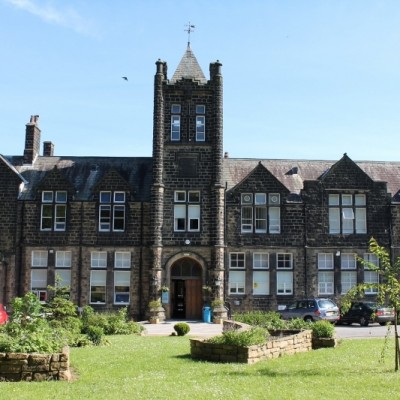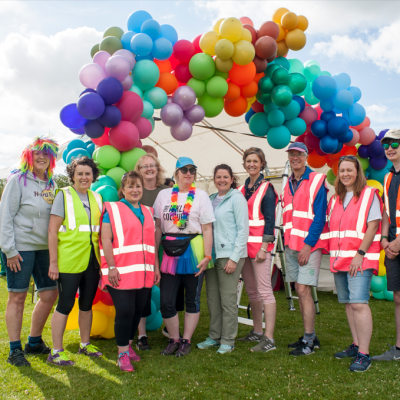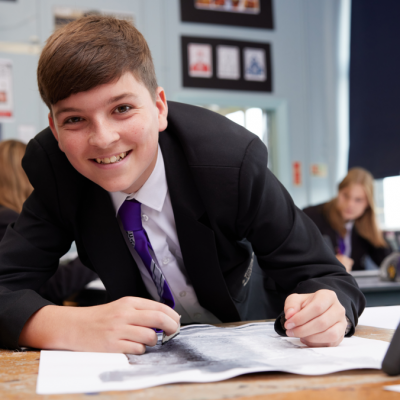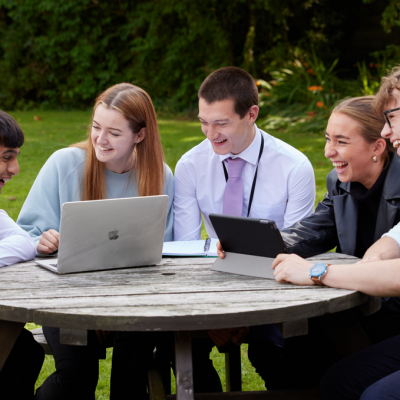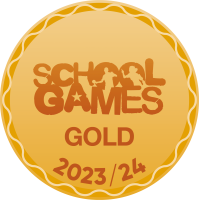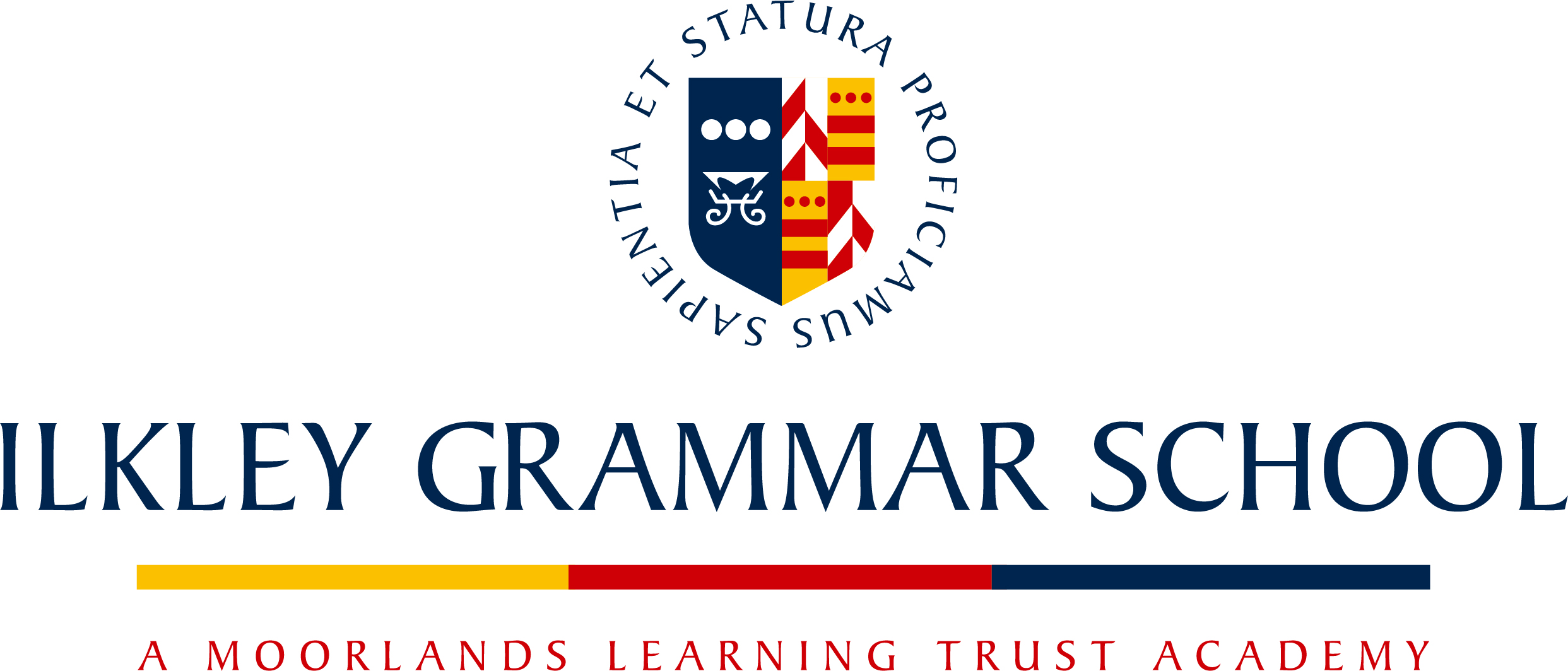CHEMISTRY
We begin our GCSE chemistry course at the start of year 9. Considerable thought has gone into the sequencing of the curriculum to ensure that students are able to build on their KS3 foundational knowledge, adding powerful knowledge as we move through our spiral curriculum to understand increasingly complex concepts.
All students follow the same combined science curriculum in year 9. At the start of year 10, some students will choose to follow the separate science path, whilst the remainder will continue with the combined science curriculum.
Year 9
Everything is made of atoms and so that is where we start our year 9 chemistry course. Knowledge of structure of the atom, and the subatomic particles of which it consists, is fundamental to the understanding of chemistry. We begin by building on the key concept of the particle model which students have studied at KS3 and recapping key definitions (atom, element, compound etc.). The development of the atomic model is studied, and students will learn how the scientific model evolved over time and the scientists who contributed to its development. This journey provides a great insight into the development and acceptance of scientific theory as well as a recognition that our scientific understanding continues to grow and that the status quo should always be questioned and when evidence is gathered by scientists, it should be rigorously cross-examined. Formation of ions is taught and will be recapped and built upon as the GCSE course unfolds. Armed with an understanding of the nuclear model of the atom, the students are now able to understand about ions and how they are formed, and isotopes.
Topic 2 is Chemical Analysis. Students learn about a range of techniques that can be used to separate mixtures. Some of the techniques such as filtration and crystallisation have been encountered in KS3. In year 9, we build on that powerful knowledge, recalling the principles that underpin the separation techniques (e.g. solubility) and applying them to more complex mixtures. This is a topic with opportunities to reinforce the powerful knowledge through practical activities. And to practice those practical skills: assessing risk; working safely; following written and verbal instructions. Students will carry out the first of 8 required practicals – Chromatography.
In term 2 we begin a more detailed study of the origins, structure and purpose of the periodic table. Students will learn about Mendeleev’s contribution to our modern periodic table, and how he built on the ideas developed by other scientists. Students will learn that the table is divided into groups and periods, and ordered by atomic number. They will learn in more detail, about the trends in Group 1 (the alkali metals) and Group 7 (the halogens) and why they occur – again we continue to build on those fundamental ideas of atomic structure from the start of the year. This will be underpinned by practical demonstrations, e.g. reactions of lithium, sodium and potassium with water. Chemical calculations is a very short topic which teaches students how to determine the Ar of an element and the Mr of a compound. We also introduce the idea of moles! This is a gentle introduction to the broader topic of chemical calculations which is fully explored in year 11. Balancing equations is also covered, this will be revisited with regular opportunities to practice throughout the GCSE course.
In the final term, we cover 2 topics with a tangible real-world connection. Using the Earth’s resources teaches students about the different types of water, processes of wastewater treatment and the challenges associated with producing potable water from non-fresh water sources. We complete our 2nd required practical here which is the purification of water by simple distillation and the determination of total dissolved solids. Students refine their understanding of renewable and finite resources and the importance of the 3 Rs (reduce, reuse, recycle). They also learn how to perform a ‘Life cycle assessment’, to assess the impact of a product over its lifetime, enabling comparison of products. This is a skilled task which requires the students to be able to interrogate data and to draw conclusion based on information they have been given, alongside their own knowledge. The final topic of the year explores ‘The Chemistry of the Atmosphere’. Students learn about the development of the Earth’s atmosphere from its origin 4.6 billion years ago. They learn about the greenhouse effect and how human activities are leading to an increase in atmospheric greenhouse gasses. We also explore to idea of ‘carbon footprint’ and ways in which we can reduce or offset our own impact.
Year 10
At the start of year 10, the combined and separate science pathways diverge. The year starts with topic 8 ‘rates of reaction’. This fun and practical topic is another opportunity to reinforce laboratory and investigative skills and to complete the next required practical in the GCSE course, investigating the effect of concentration on the rate of a reaction. We recap the particle model in order to expand on the idea of collision theory and the experimental conditions which can affect the rate of a reaction. Students learn about chemical catalysts and are treated to the popular ‘elephant’s toothpaste’ demonstration. There is considerable data collection and manipulation during this topic. Students practise and refine their graph drawing skills and learn how to determine rates of reaction graphically. Separate chemistry students will now have time to learn about testing for anions and cations and a technique called ‘flame emission spectroscopy’ (Topic 8 – Chemical Analysis). The ‘Energy changes’ topic is next. Students learn about exothermic and endothermic reactions and how to perform bond enthalpy calculations. Batteries and fuel cells are part of the separate content of this topic, however we have moved this section to year 11 as it is dependent on students’ understanding of difficult concepts such as REDOX equations which are covered later in the year. The third topic of the year is equilibria, this will take us up to the Christmas break. Student will learn about reversible reactions and dynamic equilibria. For higher tier students, the challenge of ‘Le Chatelier’s Principle’, which explores the effect of changing conditions of the equilibrium. A conceptually challenging topic, students are helped to understand using concrete modelling.
We return following the Christmas break to begin the Structure and bonding topic. This topic requires a good understanding of atomic structure and is another conceptually challenging one. It has been sequenced at this point to allow time for most students to develop sufficient knowledge and skills to grasp the concepts. We cover ionic and covalent bonding, looking at how the individual atoms combine to form molecules or giant structures, driven to achieve the noble gas electron configuration. We then explore how this initial bonding and overall structure leads to the properties of elements and compounds. Two of the key examples of giant covalent structures are diamond and graphite, students are often surprised to learn that the huge differences in properties between these two allotropes of carbon are caused (very simply) by one having fewer covalent bonds per carbon atom! A largely theoretical topic, there are limited opportunities for practical work, however, the topic is typically summarised through an investigation of the properties or some unknown samples in order to identify their type of bonding.
The next topic is a brief return to the periodic table. Initially explored during year 9, this is an opportunity to recap the powerful knowledge and add to it. We learn about the noble gases and their properties, viewed now with a greater understanding of how and why elements form compounds, and why the noble gases typically do not.
The final topic of year 10 is metals. We begin with metallic bonding. This has been consciously decoupled from the previous structure and bonding topic to allow students to focus on the details of ionic and covalent bonding and to reduce the risk confusion between the three bonding types. Students learn about the reactivity series of metals, applying this idea to displacement reactions and ultimately the ways in which metals can be extracted from their ores. Higher tier students learn about Phytomining and Bioleaching (part of the ‘Using Earth’s resources’ module) as we believe it links most appropriately alongside traditional methods of metal extraction. Finally, students learn about REDOX reactions. Building on their knowledge of ions from both year 9 and 10, we introduce ionic equations and half equations (to be revisited in year 11).
At the end of year 10, students will sit a mock exam. The exam covers all of the topic content they have learned since the start of year 9. Previous lessons will include different effective revision strategies and regular retrieval and spaced practice.
Year 11
Year 11 begins with organic chemistry. Students learn about the formation, extraction and processing of crude oil. They learn about alkanes, a homologous series of hydrocarbons, typically used as fuels. Here we link back to the year 9 chemistry of the atmosphere topic, recapping the atmospheric effects of combustion reactions. Alkenes are also studied, and students learn of their importance in the formation of polymers. Separate students explore the world of organic chemistry much more deeply, encountering further families of carbon-based molecules. They also learn about another method of polymerisation, which is used to make substances such as Nylon and Kevlar and its role in the formation of naturally occurring polymers, e.g. proteins and DNA. The second topic of year 11 is acids, bases and salts. We begin with a recap of acids and alkalis and neutralisation reactions from KS3. We then look at the difference between strong and weak acids. Students complete another of the required practicals, making a soluble salt from an insoluble base. Planning this method, the students bring together their knowledge of neutralisation reactions and naming salts.
Before Christmas, the students will sit another series of mock exams. Typically, the content of this exam will include most of the GCSE topics studied up to this point.
After Christmas, the students begin learning about electrolysis. As one of the final topics studied, it brings together much of the powerful knowledge from the proceeding topics – formation of ions; ionic bonding; REDOX reactions; half equations. The technique of using a current to breakdown ionic compounds in molten liquids and solutions, electrolysis is the final piece which completes the extraction of metals learning. Students learn in detail how electrolysis is used to extract aluminium from its ore. They also undertake the final (for the combined students) required practical which is the electrolysis of solutions. Separate students will then learn about batteries and fuel cell (from the Energy Changes topic).
The final topic of the GCSE course is chemical calculations, often simply referred to as ‘moles’. A topic many students find challenging, it was decided to teach it at the end of the course when end goal is in sharp focus. This also means that the need for revision of this topic in the lead up to external exams is reduced as the students have the learning fresh in their minds. The students build on their knowledge of Ar and Mr from year 9 and we expand on this considerably in order to be able to calculate number of moles, limiting reagents, concentrations of solutions and other applications. For separate students, there is more to learn, including gas volumes and titration calculations. Again, the skill of titration has been deliberately moved from the acids, bases and salts topic to allow the students to be able to complete the necessary associated mole calculations. The final required practical for the separate students is to complete a titration to neutralise a known volume of an unknown concentration of alkali.
Further Information:
